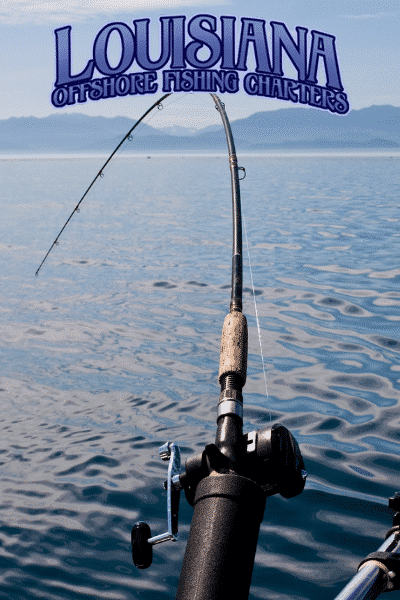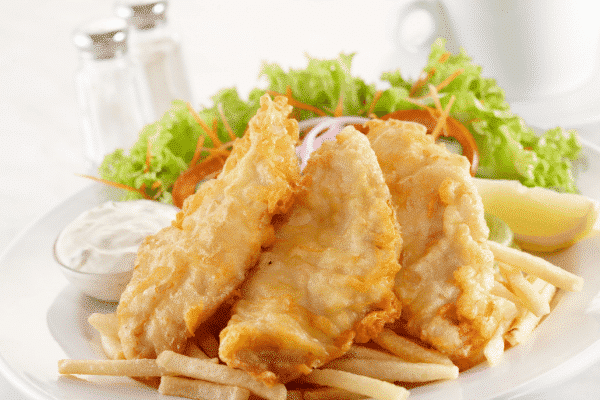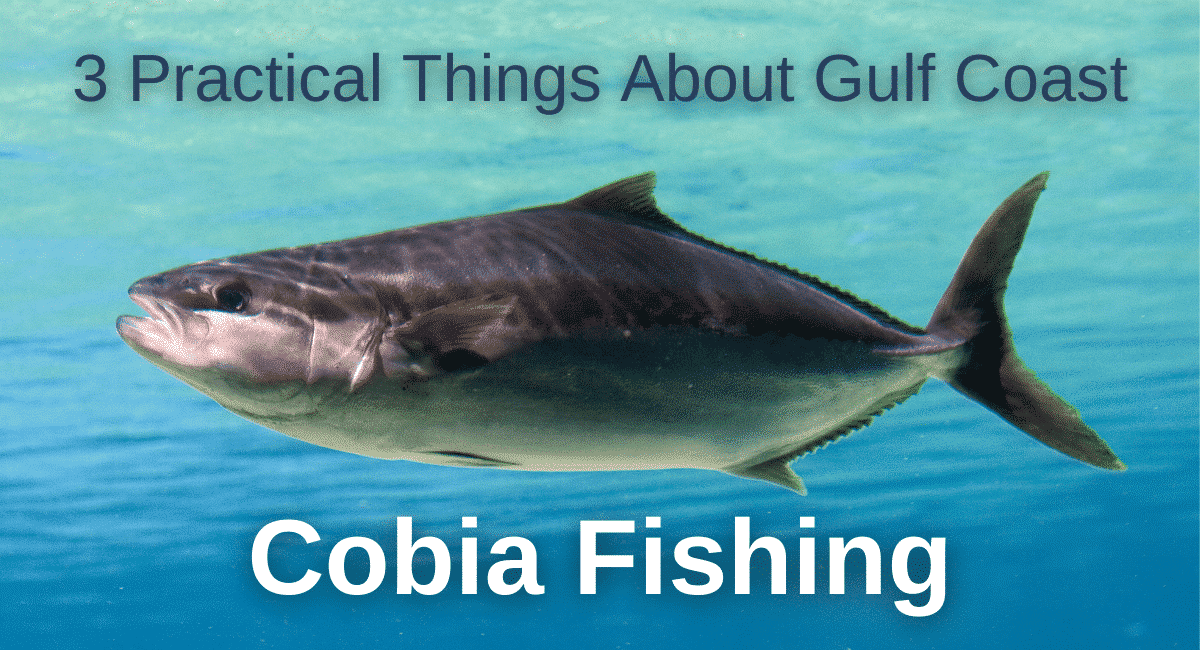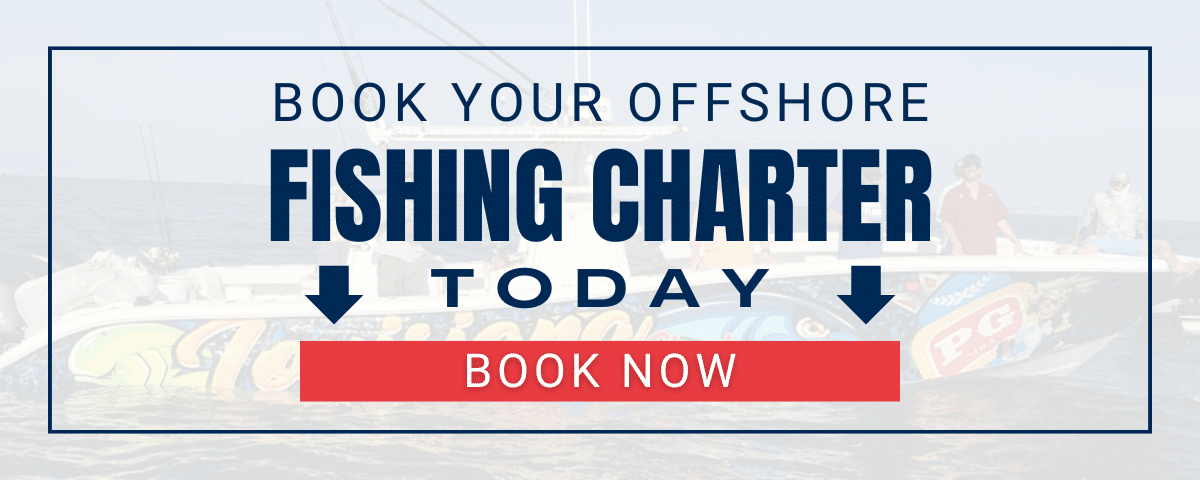Cobia fish species belong to the Rachycentridae family and have multiple unique features. They have black or dark brown scales with bushy stripes close to their underbelly and both sides of their rear part. They have a broad and flat head and an elongated body. You can mistake them for a shark due to their large pectoral fin.
Fishing for Cobia is not unlike fishing for Yellowfin Tuna in that Cobia fish spend a lot of time looking for food or pursuing large predators to kill. They mainly feed on squid, small baitfish, and crabs. Some prefer to swim in groups or schools while others swim alone.
You can easily find them near buoys, floating, or pilings debris in search of prey. Also, they migrate seasonally, so it best to use a charter fishing service to help find them.

1. When and Where Can you Find Cobia on the Gulf Coast?
Once cobia begins their journey to the Gulf of Mexico, it’s a sign that spring is fast approaching. They often move in small schools and are usually accompanied by huge rays. This species’ migration pattern leads them to the warm waters of the Emerald Coast.
Essentially, you can find cobia in the Gulf of Mexico all year round, although they have two peak seasons. In early spring, offshore waters within the Panhandle have lots of Cobia fish. The nearshore waters along the Gulf’s coast get more fish in summer.
These fish are curious and will swim towards your boat, making them an easy target. Besides, if the water temperatures hit 70 degrees, cobia moves closer to the shores. Since they are aggressive eaters, they love to move towards structures in search of baitfish. So, you can find them in navigational markers, buoys, wrecks, and nearshore or offshore reefs.
These fish are highly sought near gulf waters for sport and food. Their long runs and tendency to go for structures make them excellent game fish. However, cobia fishing calls for patience and skill. Keep in mind that these fish won’t make it any easier for you. Be ready for an outstanding level of resistance.
2. Are There Any Daily Bag Limits for Cobia?
Before you start your cobia fishing trip, you are expected to set rules and regulations. Although there is no restriction on when you can begin fishing on the Gulf waters, there are daily bag and size limits.
In the gulf waters, the least size limit is thirty-three inches. You are allowed to keep two fish per vessel or one fish per day. Note that these rules are not permanent. They can change anytime, so it’s best to inquire before you head out to cobia fishing.
3. What is the Best Bait for Cobia?
Of all the saltwater sport fish you can fish for on the gulf coast, cobia is the most exciting and easiest to catch, unlike other species. Anglers mostly use live bait, but artificial lures can also work with cobia due to its curious nature. The best cobia lure is a white bucktail jig along with a soft plastic trailer.
The jig improves casting weight while the trailer and the stout hook adds bulk and traps cobia. This lure can help catch fish roaming on the surface and those far from the surface. Furthermore, a butterfly jig or plugs are also very effective lures.
As for live lures, you can use baitfish such as eel and blue crabs since cobia loves feeding on them.
4. (Bonus) Popular Ways of Cooking Cobia in the Region

Cobia is not just an exciting game fish, but they are delicious. Cobia meat lovers like it for its quality flavor plus its amazing texture. These fish sell at a relatively high price for their tasty meat.
In the Gulf Coast region, there are several ways of cooking cobia. They can be grilled, broiled, or sautéed. They only require a light seasoning.
Finally, cobia fish are always an excellent target since they are easy to trap. Both seasoned and novice anglers can catch them. Fishing from a boat, however, will better your chances.




